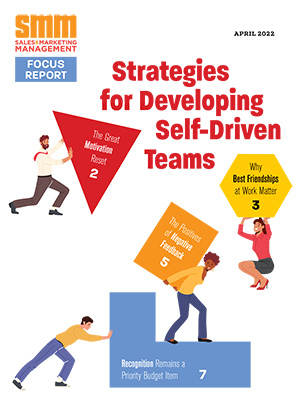I think we would all agree we are in challenging times. Companies are going to need their marketing and sales divisions, the two functions most responsible for generating profitable revenue, to operate at peak performance. It is to the detriment of the organization when these two organizations operate unilaterally and independently of each other.
And study after study reveals the downside of poor marketing and sales alignment: longer sales cycles, eroding margins, failed launches of new product, fewer qualified opportunities, missed quotas, redundant and ineffective marketing and sales materials, inconsistent messaging to the market, and ultimately diminished shareholder value. And to top it off, there is no magic formula for alignment. Both groups need to make changes and commit to integrating information and processes…
Easier said than done.
Both sales and marketing share a disdain for process—marketing thinks it will stymie creativity, and sales thinks it will reign in initiative. But embracing process is no longer a prerogative; it is the only path to alignment.
Merging Paths and Plans
There is an existing tool and process any company can use to get started—the marketing and sales plan. It is also the very place the disconnect initially occurs, so addressing it first will help move alignment along. Think about the planning process. Marketing creates an annual plan that contains details about the market, competition, customers, strategies and tactics.
But while sales and marketing may share a common revenue goal, the sales plan typically doesn’t look anything like the marketing plan. And therein lies the rub—and a solution. By creating a customer-centric integrated sales and marketing plan with a common set of objectives and metrics, alignment becomes possible.
Sales and Marketing Fly High…Together
Here’s how one company, Southwest Airlines Cargo (SWA Cargo), used their planning process for exactly this purpose:
To provide context, Southwest Airlines is a low-cost American airline based in Dallas, Texas. It is the 6th largest U.S. airline by revenue and the largest airline in the world in terms of number of passengers carried per year, as reported December 31, 2007. It also maintains the third-largest fleet of aircraft among all of the world’s commercial airlines. Similar to its competitors, Southwest Airlines carries both passengers and cargo.
For the past three years, freight has represented about $130 million of the company’s revenue. The company plans to add more cargo capability to grow its revenue. The marketing and sales team needed something they didn’t have: a focused well-articulated integrated sales and marketing roadmap with a common set of measurable objectives.
When examining examples of their previous plans, all included goals that were very general—such as grow the customer base, improve our strategic partner program and secure new business. There weren’t any performance targets for marketing or sales outside of an overall revenue goal. The team realized that without specific measurable objectives with clear performance targets supported by a well-defined plan of action, they didn’t know what to do nor were they able to determine what was working.
In addition, review of past plans revealed that the team tended to focus on what was important to SWA Cargo and not necessarily what customers needed or wanted. These challenges were compounded by the fact that the organization didn’t know enough about certain elements of its own data to be able to recommend accurate performance targets and specific objectives, strategies and tactics.
It became clear progress could only be made creating an integrated sales and marketing plan with defined measurable objectives and customer-centric metrics. This immediately revealed another thorny issue. To create this type of plan they would need good data. And one of changes they made was to look at the data differently in order to get a firmer grip on the market situation and its customers. By delving into the data, the team began to address new questions that hadn’t been explored in the past, such as how long it takes to activate a customer, how many customers they retain, and what is the ideal customer profile.
Working from the data, the team learned exactly how long it takes from the time a customer completes an application to when they first ship. They also learned how many customers need to be activated and how quickly, and how many customers need to be retained to achieve the organization’s incremental revenue target. The data enabled the team to create more focused and targeted marketing and sales programs based on facts rather than experience and intuition. And the data helped build consensus for action.
As a result of the analysis, it became clear where there were new opportunities to connect with customers. As part of the analysis, the team learned there really wasn’t a well-defined new customer communication process. While finance sent a “welcome kit” upon receiving and approving the application, the marketing and sales teams didn’t have a clear process to initiate contact. Individual salespeople approached each new customer differently and oftentimes customers weren’t contacted.
Now, there are clear tactics designed to improve customer communication. Some of the new tactics included a new customer communication process that involved a revising the welcome kit, integrating the application data into the CRM system and a formal documented process for how and when the sales team contacts new customers. Other new tactics included developing and implementing a Web-based customer advisory council and hosting a Web-based feedback survey.
By using data and deploying a customer-centric process, the team built mutual measurable objectives around customers. By using the customer buying process to understand various customers’ needs and wants, the team created a plan with a very specific roadmap.
So how is this plan different? This plan focuses much more deliberately on what’s important to SWA Cargo customers. It also has much more measurable and specific customer-oriented objectives. For example, in past plans an objective would have been stated as “develop new customer opportunities.” Using the new process, objectives are now framed more specifically, such as “add X number of new customers from Y segment with an average order value of Z.” With the new plan the organization knows where to focus to augment and gain market share and to diversify their customer base. The plan conveys the sales and marketing teams’ mutual understanding of the market. The customer-centric nature of the plan supports the organizations’ overall promise to deliver “the highest quality of customer service.”
Six Ways to Align
Feel inspired to embark on the same journey? Here are six key take-aways from the SWA Cargo team that any company can adopt to ensure success.
1. Make the effort to understand your customer data better; this is crucial to making strategic decisions that affect the future direction of your organization.
2. Create an opportunity to your leadership team to provide input and collectively agree on what the future direction should actually be.
3. Develop a specific roadmap that both marketing and sales own together that identifies how to achieve mutual success.
4. Create cross-functional teams. Select someone from sales and someone from marketing who are both accountable for specific tactics.
5. Design mutual metrics to measure both how effective and efficient you need to be to make an impact on the business.
6. Establish performance targets for every program in line with these metrics.
S&MM online columnist Laura Patterson is president and co-founder of VisionEdge Marketing, Inc, a leading data-driven metrics-based strategic and product marketing firm located in Austin, Texas. Her passion and experience for connecting marketing to business results enables the company to specialize in consulting and learning services that help organizations improve and measure marketing performance. For more information, go to www.visionedgemarketing.com. Laura’s newest book, Metrics In Action: Creating a Performance-Driven Marketing Organization, has just been published by Racom Communications.
Bridging the Gap: An Integrated Sales and Marketing Plan Provides Alignment Opportunity
Get our newsletter and digital focus reports

Stay current on learning and development trends, best practices, research, new products and technologies, case studies and much more.

